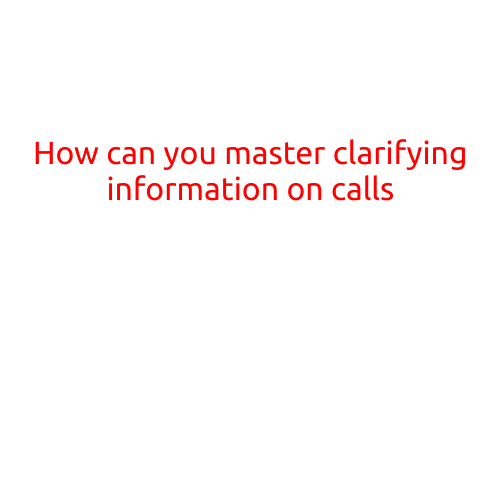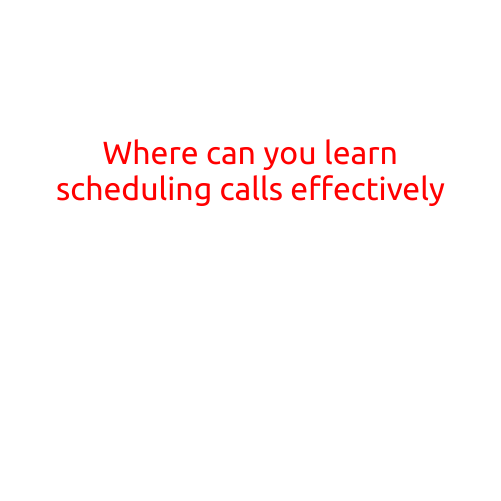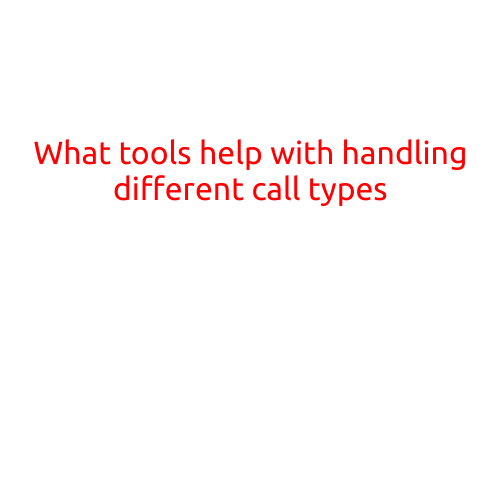
How Can You Master Clarifying Information on Calls?
Effective communication is crucial in any profession, and phone calls are an essential part of that. Clarifying information on calls is a vital skill that can make a significant difference in the success of your conversations. As a professional, you may have encountered situations where you need to clarify information with clients, colleagues, or stakeholders to avoid misunderstandings and ensure that expectations are met.
In this article, we will provide you with tips and techniques to master clarifying information on calls, making you a more effective and efficient communicator.
Understand the Importance of Clarifying Information
Before we dive into the techniques, it’s essential to understand the importance of clarifying information on calls. Clarifying information helps to:
- Avoid misunderstandings and miscommunications
- Ensure that all parties are on the same page
- Prevent mistakes and errors
- Build trust and credibility with clients and stakeholders
- Improve relationship-building and customer satisfaction
Prepare Before the Call
Before making a call, preparation is key to clarifying information effectively. Here are some tips to help you prepare:
- Review the purpose of the call and what you want to achieve
- Gather necessary information and materials
- Review any relevant notes or documents
- Anticipate potential questions or concerns
Active Listening
Active listening is a crucial aspect of clarifying information on calls. To master active listening, follow these tips:
- Give the caller your undivided attention
- Use verbal cues such as “okay” or “I understand” to show you’re engaged
- Repeat back what you’ve heard to ensure understanding
- Avoid interrupting or finishing the caller’s sentences
Clarifying Questions
Asking clarifying questions is a simple yet effective way to achieve a clear understanding of the information being discussed. Here are some tips for asking clarifying questions:
- Use open-ended questions that encourage the caller to provide more information
- Avoid leading questions that can influence the caller’s response
- Ask for specific examples or details to support the caller’s claims
Examples of Clarifying Questions
Here are some examples of clarifying questions you can ask during a call:
- Can you explain that in more detail?
- What do you mean by [specific term or phrase]?
- Can you provide an example of [concept or idea]?
- What is the timeline for [specific task or project]?
Body Language and Nonverbal Cues
Your body language and nonverbal cues can also play a significant role in clarifying information on calls. Here are some tips to consider:
- Maintain a neutral and professional tone of voice
- Use positive and supportive language
- Avoid frowning or displaying negative emotions
- Smile and show enthusiasm when discussing interesting topics
Avoiding Miscommunications
Miscommunications can happen even with the best intentions. Here are some tips to avoid them:
- Repeat back what you’ve heard to ensure understanding
- Avoid making assumptions or jumping to conclusions
- Use clear and concise language
- Avoid using technical jargon or industry-specific terms
Conclusion
Mastering clarifying information on calls requires a combination of preparation, active listening, and effective questioning. By following these tips and techniques, you can improve your communication skills and build stronger relationships with clients and stakeholders. Remember, clarifying information is an ongoing process that requires attention to detail and a willingness to ask questions and seek clarification.





